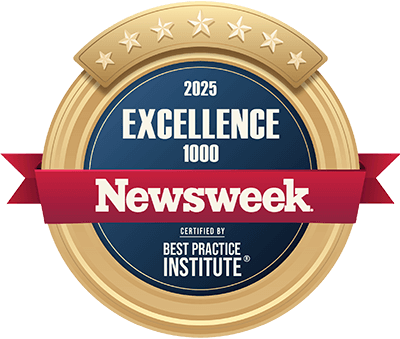Digital Transformation in Procurement
A Comprehensive Guide
Since 1989, ScienceSoft has been helping midsize and large enterprises design and implement custom strategies for smooth digital transformation of procurement.
Digital Transformation in Procurement: Summary
Digital transformation in procurement aims to help enterprises embrace a new, more effective way of organizing their procurement activities by introducing mature digital tools and cutting-edge Procurement 4.0 technologies.
|
|
|
|
|
Key project steps: analysis of the as-is business situation, designing the strategy for digital transformation in procurement, IT infrastructure modernization, upgrading the existing procurement software, developing new procurement solutions, integration, quality assurance, and user training. Timelines: 12–24 months on average. Cost: $700,000–$3,000,000+, depending on the complexity of a digital procurement transformation project. Team: a business analyst/a digital transformation consultant, a project manager, a solution architect, a UX/UI designer, a DevOps engineer, a front-end developer, a back-end developer, a data scientist, a QA engineer. |
|
|
|
ScienceSoft can design a procurement digitalization strategy, handle the transformation of your procurement processes end to end or implement the optimal solutions to address your specific challenges.
Our ability to maintain sustainable long-term collaboration and bring added value to each digital transformation project has earned us the presence in the prestigious Global Outsourcing 100 listing by IAOP.
Main Areas of Digital Transformation in Procurement
ScienceSoft’s experience shows that shifting procurement to digital helps create forward momentum for rapid advancements across all core procurement processes:
Procurement planning
You don’t have to balance the risks of stockouts against overstocking. Get valuable insights from the historical procurement patterns and real-time supply chain situation to forecast demand with 99% accuracy and precisely plan how much, when, and from whom to buy.
Sourcing
Minimize operational, financial, and reputational risks due to the AI-based selection of the best-performing suppliers. Run e-tenders and e-auctions hassle-free and benefit from 5-45% procurement cost savings due to obtaining the most competitive prices.
Procurement spend management
Harness the power of artificial intelligence to proactively identify saving opportunities and achieve up to a 40% reduction in procurement spending.
Purchasing management
Automate 80%+ of purchasing processes – and drive up to a 90% increase in the procurement workflow speed and team productivity.
Supplier relationship management
Introduce the tech-backed collaboration experiences to build a stronger connection with suppliers, eliminate redundant efforts, unlock mutual financial benefits, and mitigate risks for both parties.
Procurement analytics
Employ sophisticated big data analytics and data visualization techs to get real-time visibility of all essential procurement metrics and intelligent recommendations on the proper steps to optimize procurement performance.
Procurement data management
Embrace the elegance of modern data architectures and the efficiency of an integrated IT ecosystem to eliminate data silos and the need for manual data collection across disparate systems.
Procurement document management
Get centralized, scalable storage for your procurement-related documents to enjoy the convenient information search and navigation and the ease of collaborative document creation and management.
A Roadmap to Digital Transformation in Procurement
ScienceSoft knows that each enterprise has unique procurement processes and needs and tailors the strategies and methods to achieve digital transformation to each client’s specifics. However, we understand it’s crucial to have a general picture of how your project may look before getting to details, so, for your convenience, we have compiled a sample roadmap.
Step 1.
An in-depth analysis of the as-is business situation
Efficient and consistent digital transformation in procurement starts with the analysis of the general business goals, the procurement processes’ bottlenecks, and plans. First of all, ScienceSoft’s consultants:
- Investigate a company’s general business picture, strategy, and goals.
- Explore the current procurement processes, roles, KPIs, internal compliance standards, etc.
- Discover how procurement processes are connected with other business-critical processes, such as inventory management, corporate finance management, sales, to spot pain points and improvement opportunities.
- Audit the existing procurement tools and their integration points (if any).
- Assess the maturity of the company’s IT infrastructure and its readiness for change, e.g., for cloud migration, adoption of innovative techs, etc.
- Identify global, industry- and region-specific compliance requirements for the company’s procurement processes, for example, the WTO regulations, FAR (for federal government procurement in the US), Peppol (for e-procurement in the EU), ZATCA standards (for e-invoicing in KSA), etc.
- Reveal the problematic procurement areas (e.g., time waste for repetitive, low-value purchasing tasks, miscommunication with suppliers, procurement overspending).
- Define internal and external constraints for digital transformation in procurement.
Our consultants conduct interviews with multiple stakeholders from procurement to bridge their ideas and deliver a comprehensive vision of the required transformations.
Step 2.
Designing the strategy for digital transformation in procurement
After the analysis of the as-is situation, ScienceSoft’s experts proceed with elaborating a custom strategy and defining proper tactics:
- Determining long-term transformation goals.
- Prioritizing the goals depending on the expected cost or a possibility of a prompt payoff for particular procurement areas.
- Breaking long-term goals into short-term objectives that provide the basis for planning manageable initiatives.
- Engineering the requirements for the digital procurement workflow, IT infrastructure, and procurement solution(s).
- Laying out a detailed action plan to achieve the goals, which may comprise:
- Planning modifications of the existing IT infrastructure, e.g., migration to a cloud, infrastructure automation, implementing advanced data security mechanisms.
- Suggesting an appropriate feature set for the new and/or existing procurement software and recommending advanced technologies (e.g., AI and ML, big data, image analysis, blockchain) that can bring additional value across procurement processes.
- Designing the sustainable and scalable architecture of the procurement software ecosystem and standalone procurement solutions.
- Designing the UX and UI of procurement applications for various user roles (procurement specialists, sourcing specialists, procurement analysts, multi-tier suppliers, etc.).
- Planning procurement software integrations:
- With other business-critical systems (inventory software, accounting software, transportation management software, etc.).
- With third-party tools and services (e.g., user authentication services, messaging services).
- With the software of suppliers and business partners.
- Introducing a tech stack.
- Estimating the resources, timelines, budget, and ROI at the level of the whole project and each particular initiative.
- Creating a plan to mitigate potential project risks.
As digital transformation consultants, we always target positive financial outcomes rather than innovations for the sake of innovations. We approach the digital strategy design with the client’s ambitious business goals in mind and analyze the economic feasibility of each initiative to ensure its high return. Additionally, we can develop a proof of concept to confirm the viability and expected business value of planned transformations and proposed solutions.
Step 3.
Implementing digital transformation in procurement
At this stage, ScienceSoft gradually implements the planned transformation initiatives, which may include:
- IT infrastructure modernization.
- Establishing cloud automation, container orchestration, CI/CD pipelines, etc., for facilitated development, integration, testing, and deployment of procurement software.
- Rapid prototyping of a digital procurement solution to validate initial requirements.
- Development of procurement software.
- Modernization of the existing procurement software (rehosting, refactoring) and its evolution.
- Procurement software integration with the required internal and third-party systems.
- Data migration from legacy procurement software to the newly implemented system.
- Implementing procurement analytics, which may cover the design, training, and tuning of data science models.
- Quality assurance of the new and/or modernized procurement software: functional (including integration) and non-functional testing (e.g., security, performance, and usability testing).
- Continuous maintenance and support of procurement software.
Close and transparent collaboration between the project stakeholders is fundamental for successful digital transformation in procurement. At ScienceSoft, we promote joint planning, decision-making, and progress assessment as a way to ensure our service fully covers our clients’ requirements and address any arising issues in the optimal way.
Step 4.
User training
We conduct training for the client’s procurement teams to help them quickly learn how to use the newly-introduced techs to optimize their daily activities. We know how to overcome the reluctance to change and help convert the employees into true advocates of procurement digitalization.
Besides, we provide documented training materials and user manuals to our clients’ IT team.
Consider Professional Services for Digital Transformation in Procurement
Having decades-long expertise in digital transformation projects and 13 years of experience in supply chain software development, ScienceSoft can provide:
Consulting on digital transformation in procurement
- Creating a detailed procurement digitalization strategy aligned with your ambitious business goals.
- Consulting on using advanced techs (AI and ML, cloud, blockchain, etc.).
- Designing an optimal architecture, feature set, and tech stack for procurement software.
- Preparing a plan of procurement software integrations with the required systems.
- Consulting on security and compliance.
- Delivering a roadmap for digitalization in procurement, including cost and time estimates and a risk mitigation plan.
Implementation of digital transformation in procurement
- Conceptualizing each digital transformation initiative.
- Architecture design for procurement software.
- Developing new procurement software and/or modernizing existing procurement tools.
- Integrating procurement solutions with the required internal and third-party systems.
- Quality assurance of procurement software.
- User training.
- Support and evolution of procurement software (if required).
Why Transform Procurement With ScienceSoft
- Since 1989 in digital transformation services.
- Since 2012 in engineering custom supply chain solutions.
-
150+ testimonials from our valued clients.
- Vast experience in working with large enterprises, including Fortune 500 companies.
- Competencies in advanced technologies: AI and ML (since 1989), cloud (since 2012), big data (since 2013), image analysis techs (since 2013), enterprise blockchain (since 2020).
- Practical knowledge of 30+ industries, including manufacturing, healthcare, retail and wholesale, public sector.
- In-house project management office to lead complex digital transformation projects with distributed teams and multiple vendors involved.
- A mature quality management system and customer data security backed up by ISO 9001 and ISO 27001 certifications.
Our awards, certifications, and partnerships
Typical Roles on ScienceSoft’s Procurement Digitalization Teams
Business Analyst/Digital Transformation Consultant
Analyzes the business background, assesses the IT infrastructure and procurement processes, sets up and prioritizes digital transformation goals, creates a detailed procurement digitalization strategy.
Project Manager
Plans the procurement digitalization project (goals, timeline, budget), prioritizes the scope of work and monitors its execution, coordinates the project team(s), reports the progress to the stakeholders.
Solution Architect
Designs the architecture of the procurement IT ecosystem and specific solutions, including integration points with the required internal and third-party systems.
UX/UI Designer
Designs the UX and UI of procurement applications tailored to various user roles.
DevOps Engineer
Configures the IT automation environment (container orchestration, CI/CD pipelines, cloud automation, etc.).
Front-end Developer
Delivers the UI of procurement software and fixes the defects reported by QA engineers.
Back-end Developer
Delivers the back end of procurement software (including APIs) and fixes the defects reported by QA engineers.
Data Scientist
Designs, trains, and tunes procurement analytics models powered with advanced ML techs, including deep learning.
QA Engineer
Creates a test strategy, a test plan, and test cases to perform functional and non-functional testing.
Sourcing Models for Digital Transformation of Procurement
Advanced Technologies We Use to Digitally Transform Procurement
ScienceSoft helps select the best-fitting cutting-edge technologies for each particular business case to accelerate procurement innovation and boost procurement performance.
Cloud computing
Robotic process automation
Natural language processing
Image analysis
Big data
Machine & deep learning
Artificial intelligence & data science
Blockchain
Cost Factors of Digital Transformation in Procurement
|
|
|
|
|
From ScienceSoft’s experience, a digital procurement transformation project for an upper-midsize company may cost around $700,000–$3,000,000. Large enterprises with complex procurement processes should expect to invest $3,000,000+. |
|
|
|
Below, we outline the major factors that affect the cost of implementing digital transformation in procurement:
- The number and complexity of procurement processes covered by solution/solutions (procurement planning, sourcing, document management, etc.).
- Requirements for the modification and evolution of the existing procurement software.
- Implementation of advanced techs (AI and ML, big data, blockchain, etc.).
- The depth of transformation of the existing IT infrastructure.
- The number and complexity of procurement software integrations with the required internal and third-party systems.
- The number of user roles for procurement software.
- Uniqueness and complexity of UX/UI design of procurement apps.
- The complexity of procurement analytics.
- Availability, performance, security, latent capacity, and scalability requirements.
- Regulatory compliance requirements.
About ScienceSoft
ScienceSoft is a global IT consulting and software development company headquartered in McKinney, Texas. We provide end-to-end digital transformation services to help enterprises drive improvements across their procurement processes with the help of robust procurement software and advanced techs. In our digital transformation projects, we employ mature quality management and data security management systems backed by ISO 9001 and ISO 27001 certifications.




